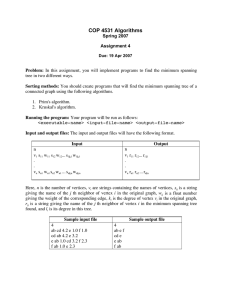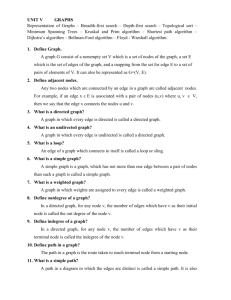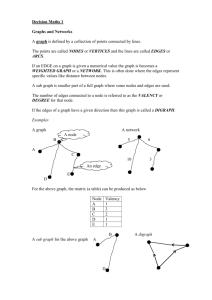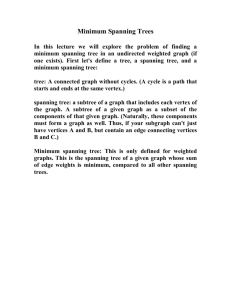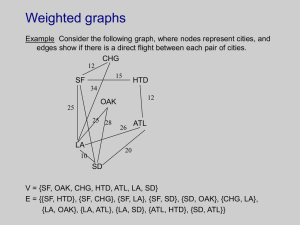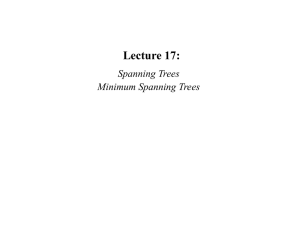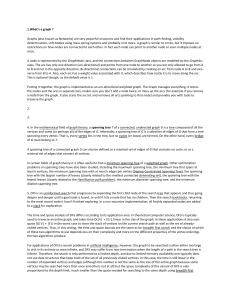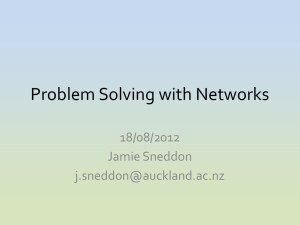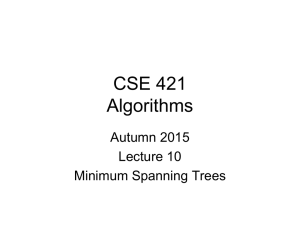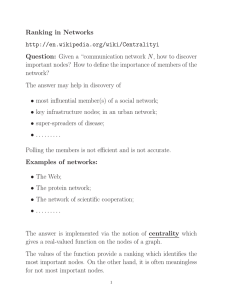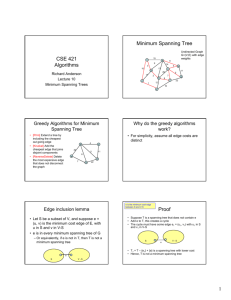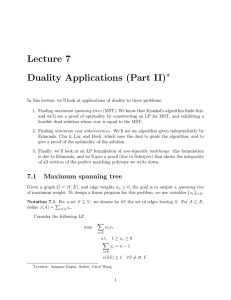Depth first search Breadth first search An Example Unweighted
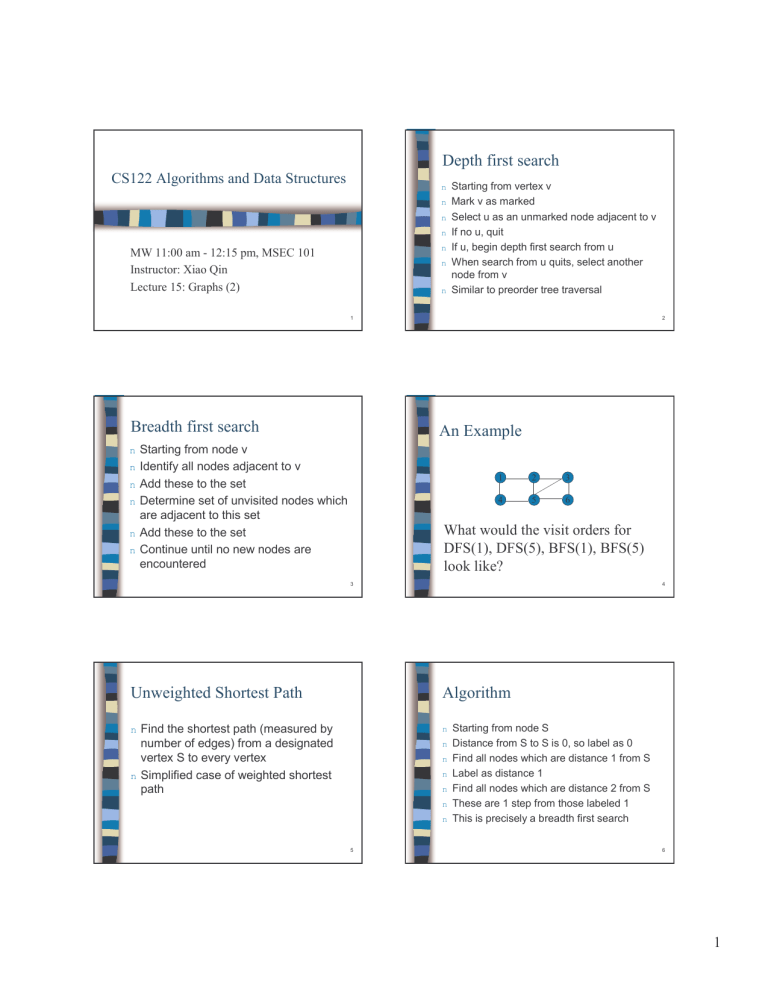
CS122 Algorithms and Data Structures
MW 11:00 am - 12:15 pm, MSEC 101
Instructor: Xiao Qin
Lecture 15: Graphs (2)
1
Depth first search
n
Starting from vertex v n
Mark v as marked n Select u as an unmarked node adjacent to v n If no u, quit n If u, begin depth first search from u n
When search from u quits, select another node from v n
Similar to preorder tree traversal
2
Breadth first search
n
Starting from node v n Identify all nodes adjacent to v n
Add these to the set n
Determine set of unvisited nodes which are adjacent to this set n
Add these to the set n
Continue until no new nodes are encountered
3
An Example
1
4
2
5
3
6
What would the visit orders for
DFS(1), DFS(5), BFS(1), BFS(5) look like?
4
Unweighted Shortest Path
n
Find the shortest path (measured by number of edges) from a designated vertex S to every vertex n Simplified case of weighted shortest path
5
Algorithm
n
Starting from node S n
Distance from S to S is 0, so label as 0 n
Find all nodes which are distance 1 from S n
Label as distance 1 n
Find all nodes which are distance 2 from S n
These are 1 step from those labeled 1 n
This is precisely a breadth first search
6
1
Positive Weighted Shortest Path
n
Length is sum of the edges costs on the path n
All edges have nonnegative cost n
Find shortest paths from some start vertex to all vertices n similar process to unweighted case n
Dijkstra's Algorithm
7 n
Distance at each node v is shorted path distance from s to v using only known vertices as intermediates n
An example of a Greedy Algorithm n
Solve problem in stages by doing what appears to be the best thing at each stage n
Decision in one stage is not changed later
8 start at v1, all distances are infinity
2
4
1 2 10
1 3
3
2
4
2
8 4
5
6 1 7
6
5 mark v1 is removed from the toBeChecked set, with distance 0
4
0
1
2
2 10
1 3
3
2
4
2
5
8 4
5
6 1 7
6
9
Ford Algorithm
FordAlgorithm(G, s) for all vertices v do dist[v] =
∞
; p[v] = NULL; dist[s] = 0; while there is (v,u) that dist[u]>dist[v] + weight(v,u) do dist[u] = dist[v] + weight(v,u); p[u] = v; endwhile
10
Spanning tree
n subgraph of G n contains all vertices of G n connected graph with no cycles
11
Minimum spanning tree
n spanning tree with minimum cost n only exists if G is connected n number of edges is |V|-1 n two greedy methods
– Kruskal's algorithm
– Prim's algorithm n differ in how next edge is selected
12
2
Kruskal's algorithm
n select edge with smallest weight as accept the edge if it does not cause a cycle n determining if it causes a cycle: essentially the equivalence class (union/find) problem n two vertices belong to the same set iff they are connected in the current spanning forest
13
Construct MST for this graph using Kruskal's algorithm
2
4
1 2 10
1 3
3
2
4
7
5
8 4
5
6 1 7
6
3
5
4
2
1
6
8
1
2
4
1
4
3
2
7
7
10
6
5
14
Prim's algorithm
n grow the tree in successive stages n in each stage, one node is picked as the root, we add an edge, and thus a vertex is added to the tree n have a set on vertices in the tree and a set that is not in the tree
15
Prim's algorithm (cont.)
n at each stage, a new vertex to add to the tree is selected by choosing edge
(u, v) such that the cost of (u,v) is the smallest among all edges where u is in the tree and v is not n
Build spanning tree starting from v1 n
Result in the same spanning tree as that given by the Kruskal algorithm
16
Construct MST from v1 for this graph using Prim's algorithm
2
4
1 2 10
1 3
3
2
4
7
5
8 4
5
6 1 7
6
3
4
5
1
2
6
8
1
4
2
1
4
3
2
7
10
7
6
5
17
3
